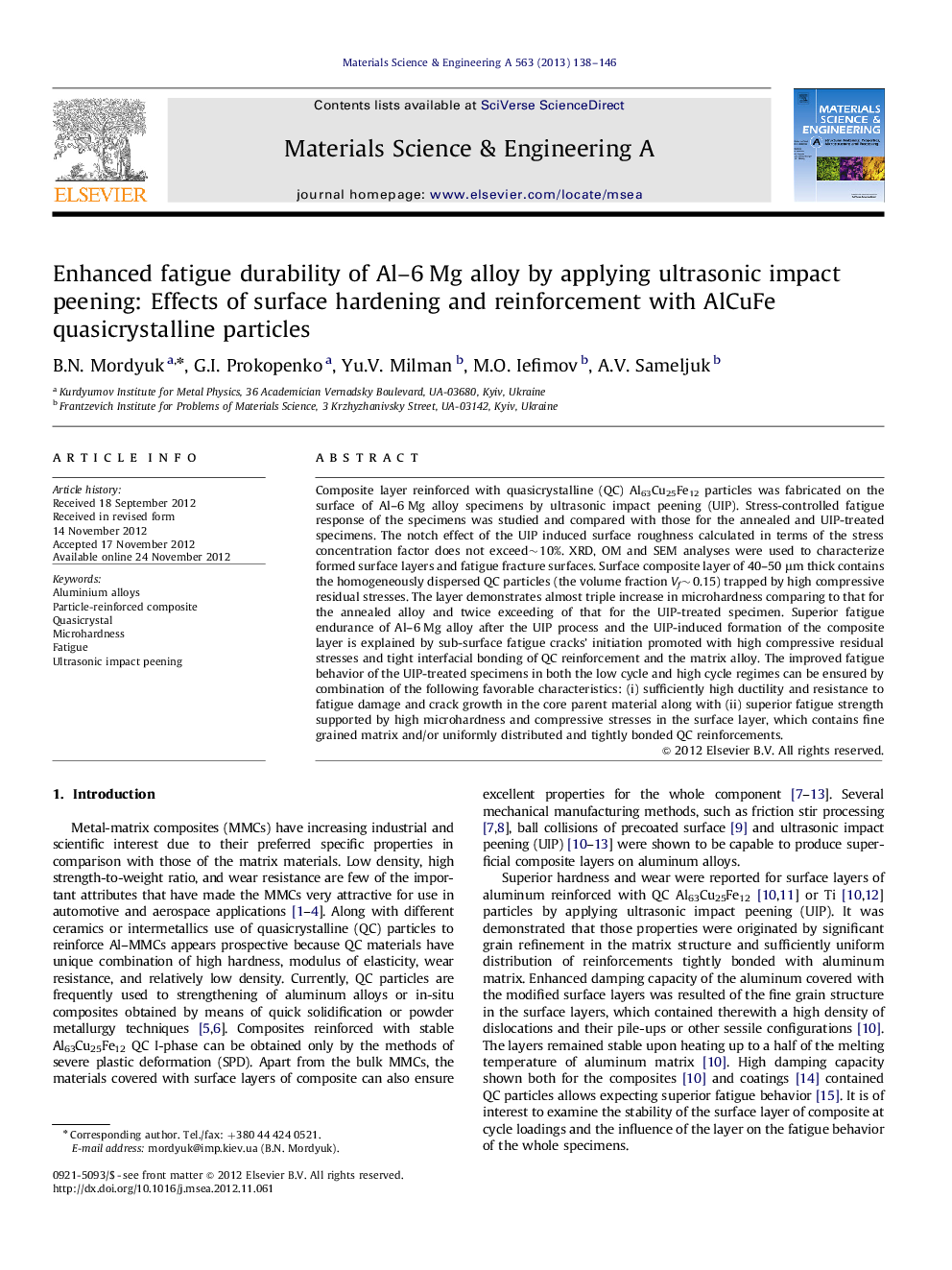| Article ID | Journal | Published Year | Pages | File Type |
|---|---|---|---|---|
| 1576438 | Materials Science and Engineering: A | 2013 | 9 Pages |
Composite layer reinforced with quasicrystalline (QC) Al63Cu25Fe12 particles was fabricated on the surface of Al–6 Mg alloy specimens by ultrasonic impact peening (UIP). Stress-controlled fatigue response of the specimens was studied and compared with those for the annealed and UIP-treated specimens. The notch effect of the UIP induced surface roughness calculated in terms of the stress concentration factor does not exceed∼10%. XRD, OM and SEM analyses were used to characterize formed surface layers and fatigue fracture surfaces. Surface composite layer of 40–50 μm thick contains the homogeneously dispersed QC particles (the volume fraction Vf∼0.15) trapped by high compressive residual stresses. The layer demonstrates almost triple increase in microhardness comparing to that for the annealed alloy and twice exceeding of that for the UIP-treated specimen. Superior fatigue endurance of Al–6 Mg alloy after the UIP process and the UIP-induced formation of the composite layer is explained by sub-surface fatigue cracks’ initiation promoted with high compressive residual stresses and tight interfacial bonding of QC reinforcement and the matrix alloy. The improved fatigue behavior of the UIP-treated specimens in both the low cycle and high cycle regimes can be ensured by combination of the following favorable characteristics: (i) sufficiently high ductility and resistance to fatigue damage and crack growth in the core parent material along with (ii) superior fatigue strength supported by high microhardness and compressive stresses in the surface layer, which contains fine grained matrix and/or uniformly distributed and tightly bonded QC reinforcements.
